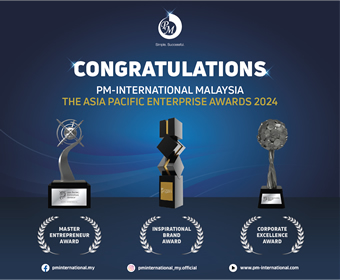PRASARANA Malaysia Bhd is undergoing a digital transformation to enhance its services and overall experience.
This aims to improve ridership and meet users’ future demands by leveraging digital innovations and emerging technologies.
Its group chief digital officer Eamon Chee said one of the primary goals of the digital transformation is to streamline processes, and reduce manual handling and paperwork.
He added that digitising data and automating processes can help minimise human error and enhance operational effectiveness.
“Our strategic goal is always to drive digital innovation and transformation for the company. It is to infuse the company with new technology, new skills and capabilities that will bring it forward,” Chee said.
“There are so many digital innovations in the market and the world these days. From open payments to Internet of Things technology to artificial intelligence and machine learning, we are actually exploring all these initiatives,” he told The Malaysian Reserve (TMR).
While Prasarana embraces digital transformation, Chee said the greatest challenge lies in helping people adapt to new technologies as it is crucial to change people’s mindset and drive behaviour change to achieve the desired transformation.
Hence, Prasarana is working on implementing an upskilling programme to improve capabilities of its workforce, ensuring it can effectively leverage new technologies for the benefit of the company and customers.
“For this programme, we are working with people from across the company’s functions. Upgrading mindset will change behaviours and behaviours will change the process,” he added.
The company’s digital strategy also encompasses creating a digital ecosystem through its commuting application called Pulse, which functions as a comprehensive platform to provide information on stations, facilities and services provided by Prasarana.
Pulse, which stands for “Planning your Lifestyle Efficiently”, was launched in December 2020 to provide users with the estimated arrival time of buses and trains; the locations of bus stops, Mass Rapid Transit, Light Rapid Transit and monorail stations; as well as other public transport hubs in the Klang Valley, Penang (under Rapid Penang) and Kuantan (under Rapid Kuantan).
At the same time, Prasarana also aims to reach out to different segments of the population, including the elderly and the less fortunate, by offering tutorials and assistance to ensure they can make use of the app’s features.
Incentives, rewards and loyalty programmes are being developed together with collaborative partners to encourage more people to utilise the app and public transportation.
“Through the app, one of the strategies that we would like to tackle is the vulnerable groups such as persons with disabilities, the elderly and the less fortunate,” Chee said while adding that Prasarana is also trying to redevelop the application by including online tutorials to help those who are not digital-savvy to navigate around the application.
As part of its digital transformation, Prasarana is currently exploring collaborations with various lifestyle and online shopping platforms by offering special deals exclusively for commuters.
This, Chee said, will help to increase ridership and make public transportation a more appealing option such as integrating the “first and last mile” solutions with mobility providers like Grab and AirAsia, further enhancing the convenience and connectivity of using public transport.
Prasarana’s efforts towards digitalisation will start with the implementation of smart solutions at the upcoming Prasarana Tower in Subang, before it can be implemented at the stations and the facilities.
According to Chee, they will be moving into the new infrastructure by December this year.
The building will replace analogue systems with digital alternatives, such as state-of-the-art smart CCTVs, smart energy monitoring, smart lighting and more.
While some newer stations already boast these advanced features, Chee said retrofitting older stations requires careful planning and execution.
“Some of the newer stations already have smart CCTVs while some of the oldest ones still use analogue. Smart CCTVs are not cheap, so it will take some time to replace them all,” he said.
Based on his experience with similar projects in Australia, Hong Kong and Singapore, Chee said the transformation process will take typically three to five years.
However, he added, the long-term benefits of enhanced safety, efficiency and customer satisfaction make the investment worthwhile.
The post Prasarana’s digital transformation to improve customer experience first appeared on CXP – Customer Experience Asia.
















